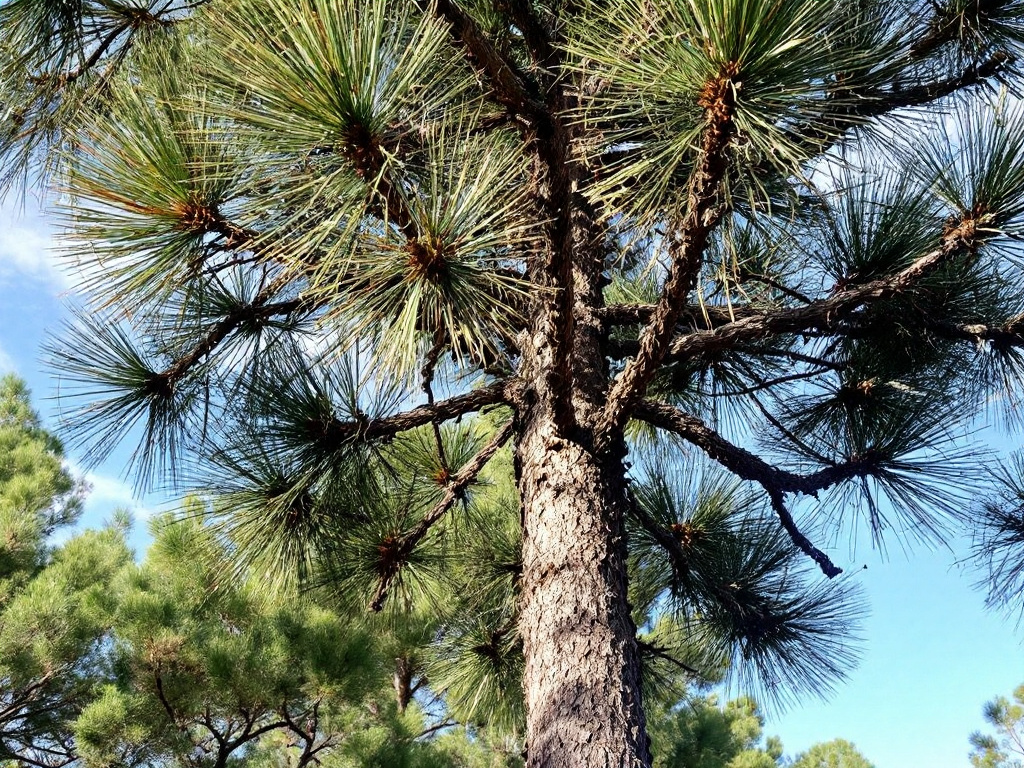Image generated by flux-ai.io & content generated by ChatGPT Version 4o-mini
Beware the Pine Shoot Beetle: A New Threat to Florida’s Pines
Residents of Brevard County, Florida, are no strangers to the beauty and importance of pine trees. These trees not only provide shade and habitat for wildlife but also play a crucial role in our local economy, especially in the Christmas tree industry and timber production. However, recent research has highlighted a concerning pest that could threaten our beloved pines: the Pine Shoot Beetle, scientifically known as Tomicus piniperda.
What is the Pine Shoot Beetle?
Originally from Europe, the Pine Shoot Beetle was first spotted in the United States in 1992. Since then, it has made its way across several states. This small insect, measuring just about 3.5 to 4.8 millimeters, can cause significant damage to pine trees, especially during their vulnerable growing periods. The beetles are particularly attracted to weakened trees but can also target healthy ones.
How Does it Affect Our Pines?
In Brevard, we primarily see species like loblolly pine and sand pine, both of which are essential to our local economy. The Pine Shoot Beetle attacks the new growth of these trees, leading to dieback and malformations. For instance, if you’ve ever seen a Christmas tree with drooping, yellowing branches, it might have been affected by this pest. This is especially concerning for local Christmas tree farms, which generate around $3 million annually.
The beetles create galleries under the bark of the trees, where they lay their eggs. As the larvae hatch, they feed on the tree’s tissue, which can severely weaken or even kill the tree. In areas where these beetles establish themselves, the damage can lead to significant economic losses, affecting not just tree farms but also the broader timber industry.
Why Should Brevard Residents Care?
With Brevard’s economy strongly tied to agriculture and forestry, the arrival of the Pine Shoot Beetle could spell trouble. The loblolly pine is crucial, as it is not only used for timber but also plays a role in our local ecosystem. Losing these trees could disrupt both the economy and the environment.
Moreover, with climate change leading to warmer winters, the beetle could thrive and reproduce more quickly in Florida compared to its native regions in Europe. This means that Brevard could see more generations of these pests throughout the year, exacerbating the damage to our trees.
What Can Be Done?
Currently, there are no effective chemical controls specifically for the Pine Shoot Beetle. Experts recommend cultural practices such as careful timing of tree cutting and ensuring that any infested wood is properly managed to prevent the spread of the beetles. Additionally, a predatory beetle known as Thanasimus formicarius has been shown to feed on the Pine Shoot Beetle, offering a natural control method.
For residents, it’s crucial to be vigilant. If you notice signs of damage on pines—like yellowing shoots or exit holes on the bark—report them to local agricultural authorities. This proactive approach can help mitigate the spread of the beetle.
Conclusion
As we enjoy the natural beauty of Brevard County, it’s important to stay informed about potential threats to our pine trees. The Pine Shoot Beetle may be small, but its impact can be enormous. By understanding the risks and taking action, we can help protect our local forests and the economy they support. Let’s work together to keep our pines healthy for future generations!
References
EENY-321/IN596: Pine Shoot Beetle, Tomicus piniperda (Linnaeus) (Insecta: Coleoptera: Curculionidae: Scolytinae). (n.d.). Ask IFAS – Powered by EDIS. https://edis.ifas.ufl.edu/publication/IN596

